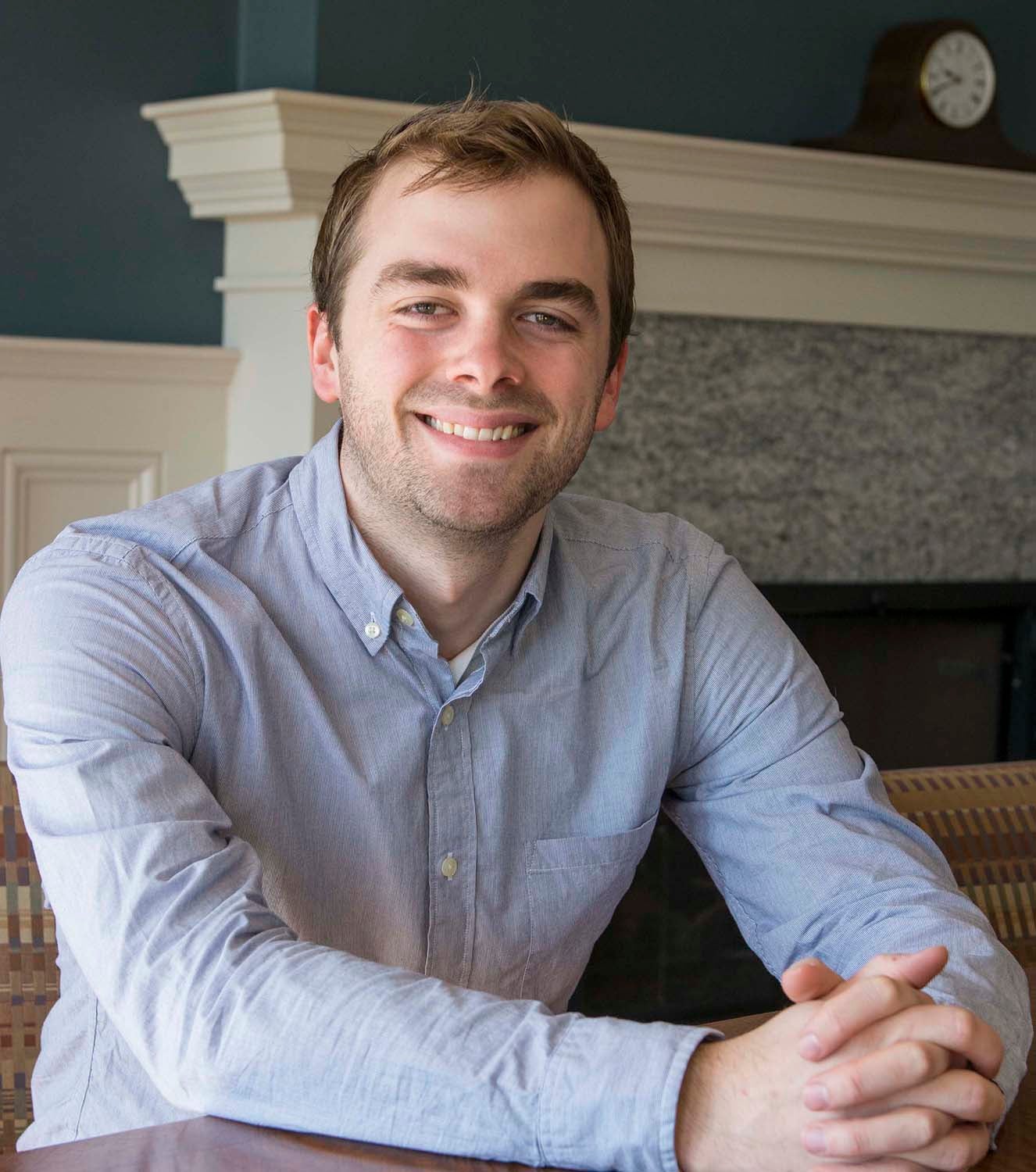Sean Anderson

- Hometown: Cape Elizabeth, Maine
- Major: Master’s in Oceanography
- Graduation Year: 2016
When people are hungry they look for food, maybe a cheeseburger. But what happens to microorganisms in the ocean when they get hungry? Do they perish, live or grow?
Sean Anderson, a 24-year-old student at the University of Rhode Island’s Graduate School of Oceanography, answered those questions researching the feeding habits of heterotrophic protists—microscopic ocean plankton that make our planet habitable.
In May, he’ll graduate with a master’s degree in oceanography, but now he’s buckled down in his office on the Narragansett campus writing his thesis, “Growth, Grazing and Starvation Survival in Three Heterotrophic Dinoflagellate Species.”
Working with professor Susanne Menden-Deuer in her lab at GSO, he says, have been challenging and rewarding. “I finished my thesis two weeks ago and plan to defend it April 14,” he says, gleefully. “It’s been a fantastic two years being able to get lab and field experience.”
Growing up in Cape Elizabeth, Maine, a small town outside of Portland, he cultivated an interest in the ocean as a kid catching crabs near his house. He studied biology at Old Dominion University in Virginia, then worked as an intern at Bigelow Laboratory for Ocean Sciences in East Boothbay, Maine, where he “fell in love” with plankton, including heterotrophs.
“It blew my mind,” he says. “They’re so small, yet so important.”
From there, he joined GSO to work with Menden-Deuer, an internationally renowned researcher on plankton ecology. He had the trip of a lifetime his first semester when he went on a research expedition to Antarctica to study the eating habits of krill.
“It was amazing,” he says. “It was unlike anything I’d ever seen before—giant glaciers, mountains, penguins. The air was incredibly clean. You could see for miles.”
At GSO he focused on the “predator-prey relationship” between heterotrophs and their food source—phytoplankton.
Heterotrophs, he explains, eat phytoplankton. In turn, heterotrophs are eaten by larger marine life, such as copepods and fish, making them a critical link in the marine food web. Also, heterotrophs are dependent on phytoplankton to reproduce.
But what happens when phytoplankton are in short supply? Anderson says the heterotrophs can face long periods of starvation, especially in the winter when there are fewer phytoplankton. He examined how long the organisms could go without food, and how long it took them to resume feeding once phytoplankton were found again.
In the GSO lab, he grew cultures of heterotrophs, feeding some and starving others. Then he measured their growth and eating rates.
Here’s what he found: Heterotrophs, indeed, can live for two or three months without eating. After starvation they can rapidly ingest phytoplankton, but do not reproduce as quickly. That delay in reproduction could impact the ocean’s food web because it allows the phytoplankton to grow unimpeded.
“Any shifts in the balance between predator and prey in the ocean ecosystem are crucial for scientists to study,” says Anderson. “My results are also important for projecting plankton feeding and growth down the road, especially in the face of climate change.”
After graduation, Anderson will continue to work in Menden-Deuer”s lab and prepare his research for publication. Science, he says, will always be in his life.
“I never thought I’d be so captivated by things I can’t see with the naked eye,” he says. “I even have dreams about plankton. It’s truly become my obsession.”
URI Photo by Nora Lewis
Media Contact: Elizabeth Rau, 401-874-4894

